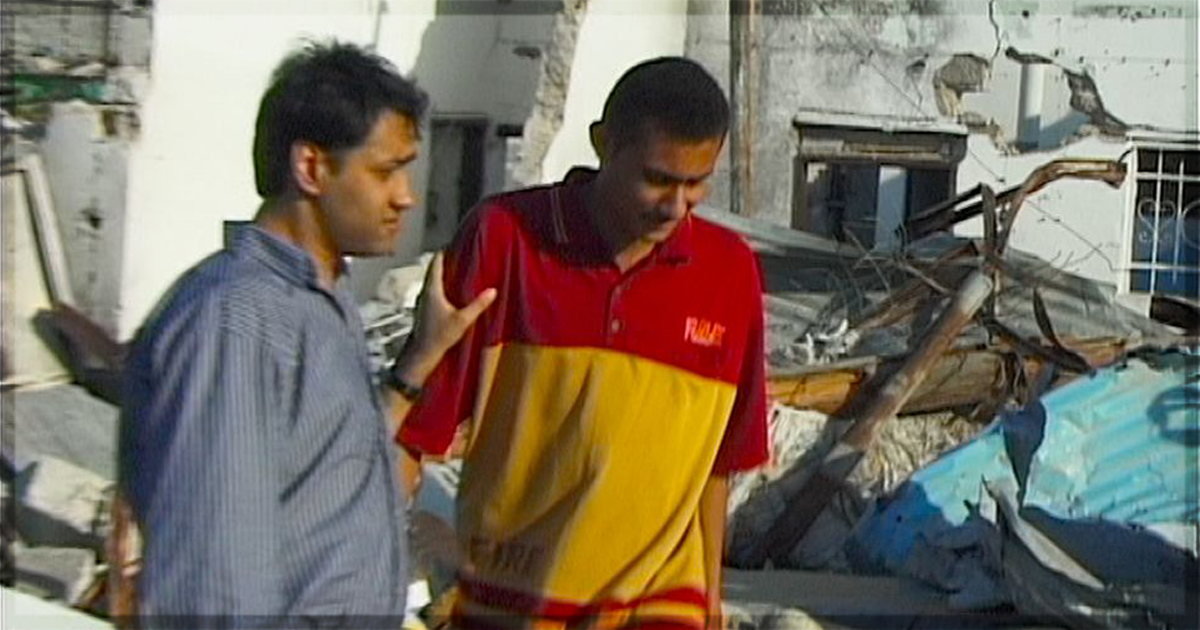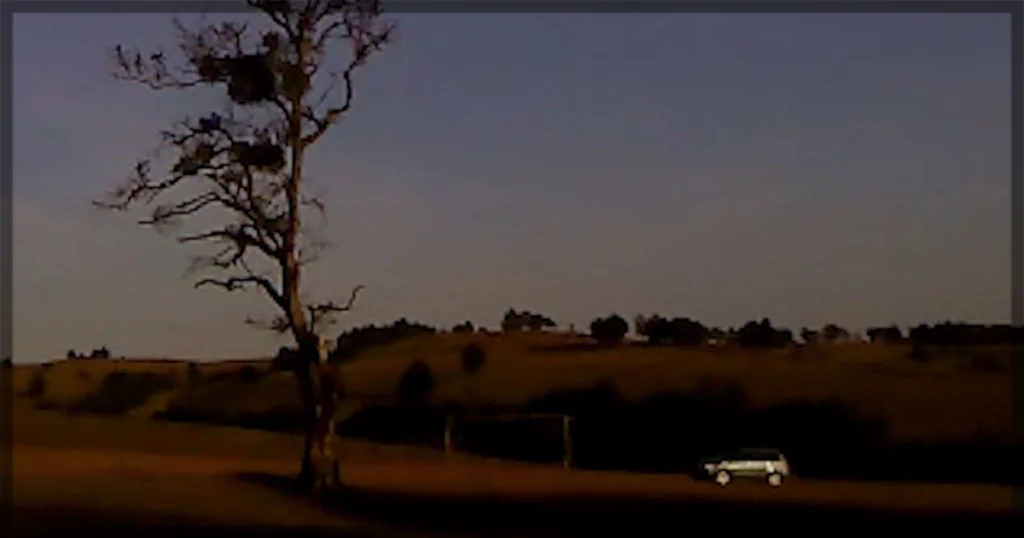The Palestinian experimental director Kamal Alijafari is one of the voices that portray the Palestinian diaspora during times of genocide. Last year, the director released A Fidai Film, an experiment on footage from the Israeli Army invasion in Beirut in 1982. Therefore, the film is a poignant documentation of the colonial violence by the Israeli armed forces in Lebanon and Palestine, especially in the attempt to erase the Palestinian culture and identity. This year, Alijafari presents his latest film, With Hasan in Gaza, in the competition of the Locarno Film Festival, one of the most reputable film festivals in the circuit. In his newest effort, the director organizes the material found from three miniDV cameras that recorded a trip to the Gaza Strip on November 1st and 2nd, 2001. The rediscovered footage is from a man who made the trip to encounter his cellmate from a prison sentence and had Hasan Elboubou as his guide. Hence, the film is a declaration to a place that disappeared, and people who are probably dead.
The film is a capsule that unfolds a moment of history that is too particular. Heavy traffic of vehicles in the Gaza streets, fairs with dozens of different sellers, and children running on the coast of the Palestinian beaches. The director proposes a film that relies on the constant comparison to the reports of the ongoing genocide in Gaza. It works in a juxtaposition between the past, full of life, and the present, where death rings all around the strip, after the deaths of over sixty thousand Palestinians. The specific texture of the miniDV footage resembles an era where the individuals living in the region could live and not face an inhumane regime of intentional starvation. Consequently, those recorders film the encounter between the camera bearer and his dear friend, who are not the central elements of the footage.
A quarter of a century before the genocide in course, the recorders film the colonial violence that the communities would face – the Israeli checkpoints, the fear of appearing in footage, and becoming an IDF target. In this sense, the footage is a reminder that the genocide did not start in October 2023. It is an eighty-year effort to diminish, murder, and dehumanize the land owners until they give up on their rights and run out of forces to fight against the Israeli military’s potency. Hence, we watch the destruction of Palestinian homes by an “accidental hit,” causing a fire that destroyed the home of a family. These acts of violence would justify themselves by the greed and necessity of establishing an apartheid state, where fear is the principal element to control the counter-effects of the Palestinians, and their revolutionary efforts to free themselves.
Alijafari extracts the political force from the unknown cinematographer of the early 2000s, who observes the operational forces of the IDF surveilling a village at night. The grains remind us of a bygone period; meanwhile, the most technologically advanced drones destroy Gaza day by day. The film by the experimental director is a reminder of a practice that has been happening ever since the Nakba, the constant violence against Palestinians to settle in their territory. In this sense, the director paces the images to an observational role, where the audience watches, precisely like the tourist from afar, the brutal dehumanization of the locals. Hence, the film converses directly with the apartheid happening in the Middle East, where Israel controls the narrative, and gathers funding from European and North American countries. Even though it utilizes long shots to explore the situations and observations from the tourist and Hasan, the film is an exercise in traveling to a Palestine that is in history books.
In the end, with Hasan in Gaza, it is a poignant exercise of rescuing film footage to eternize the portrayal of a region that suffers under the control of an ethnostate supported by the Western countries. It is the use of the cinematic media to investigate and utilize it as a medium to spread the juxtaposition between the early 2000s Gaza and the current landscape of destruction. Consequently, it delves into an experiment with miniDV as the recorder of the past, a particular moment in history that is not coming back. In a similar fashion to an A Fidai Film, Kamal Alijafari analyzes the past footage to reinterpret it with the current geopolitical situation of Gaza, provoking a reflection of the elusive nature of documentation. Even though there are thousands of archives on the war crimes and genocidal operations in Gaza, it does not prevent them from happening.
With Hasan in Gaza recently played at the Locarno Film Festival.
Learn more about the film at the Locarno site for the title.


